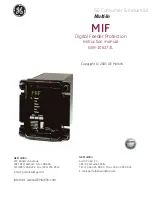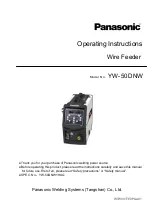
Parts adjustments and replacements
32
7.6.3
Adjust the escaper notch position.
Turn the power switch ON while covering the sensor light axis
When the power is ON, the screw sensor LED lights up and the escaper motor moves around
to the back, to the starting point. (Reference point run.)
When the escaper motor is at the reference point, the escaper doesn't move.
When it is not at the starting point, the escaper motor moves oppositely around to return to
the starting point and then stops. (Reference point run.)
NOTE:
Before adjustment, the starting point for the escaper motor and the position of
the escaper notch are not the same.
A reference point run is the detecting of the starting point of the escaper
motor rotation.
Cover the sensor's optical axis with a piece of paper.
When the power is on, the escaper motor has the ability to remain stationary.
Make a reference point run-and-stop and when the escaper motor is stationary, then you can
align the position of an escaper notch with the rail groove.
Fine adjustments can be made for the clearance between the end of the rail and the escaper
by loosening the screws, on either side of the center of the escaper, and moving the escaper
to an ideal position.
Remember to tighten the screws again.
After adjustment, turn the power switch OFF/ON in order to make a reference point run and
check that an escaper notch and the rail groove align.
After, remove the paper blocking the sensor's optical axis and the escaper will start rotating.
Check that all 4 notches of the escaper, each in rotation, stop at the rail groove.
[Reference] It is possible to adjust the groove section as you adjust the position of the
escaper bracket. Refer to
Check and adjust the position of the robot escaper guide
page 31.
•
There must not be any contact between the rail and the robot escaper guide.
•
The escaper top surface should be the same height as the rail top surface or slightly lower.



































